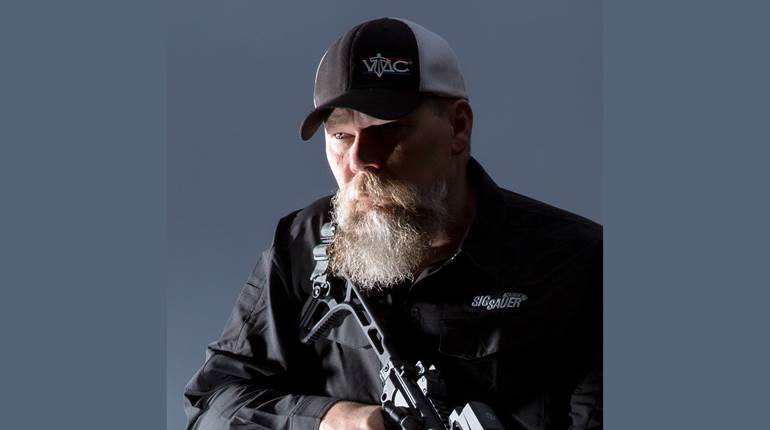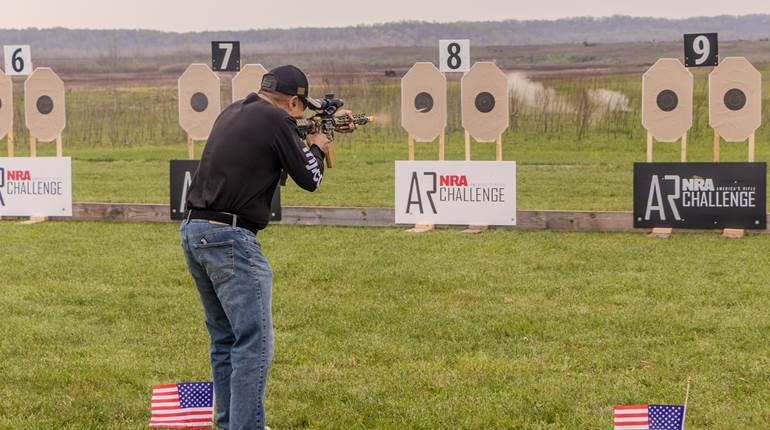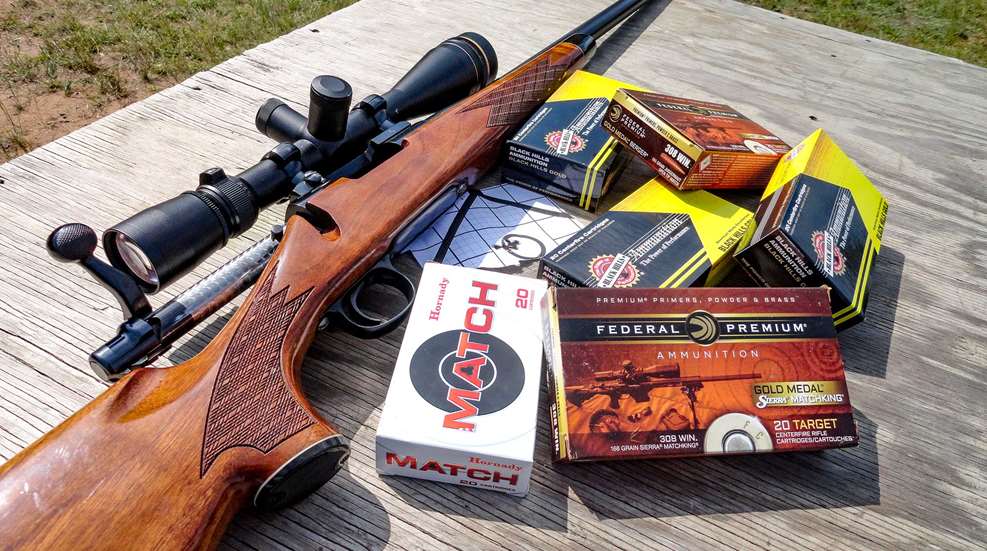
Many a rifle shooter has aspired to hit with great precision at long range but is convinced that the tools to achieve such results are not affordable. It’s true, a person could spend $5,000—even double that—for a high-end precision rifle and a top-tier scope. But if we step back for a minute and compare the cost of rifles to that of, say, cars, we can all agree that none of us learned to drive in a Lamborghini, right?
Likewise, learning to shoot precisely at long range doesn’t automatically require a rifle that prints ¼” groups at 100 yds., which can cost twice as much as one that shoots ½” groups, which, in turn, might cost twice what a 1”-grouping rifle does. My point is that squeezing out that last iota of performance dramatically increases price. And while the very best is worth it—if you can shoot that well—few novices can justify such high initial prices.
Yet, cost should not dissuade you from trying your hand at precision marksmanship. I’ve long believed that a new long-range shooter can get started for hundreds—not thousands—of dollars. To test my theory, I recently explored ways to balance affordability with shootability, assembling outfits of used rifles and scopes, along with reasonably priced ammunition, and then test-fired the resulting combinations to see if I could achieve results worthy of a precision marksman.
Choosing a Suitable Precision Rifle
Bolt-action rifles tend to be inherently more accurate than semi-automatics, so first I considered an assortment of standard factory bolt guns and—even less expensive--opted for used factory-made rifles. In good condition, these bolt guns are moderately priced, such as Remington and Winchester heavy-barrel varmint rifles, and at least a dozen others from Savage and Tikka, to name a few. My selected bolt-action rifles—a Remington Model 700, a CZ-USA Model 527 and a Savage Arms Model 11 Long Range Hunter—have very affordable real-world prices of $450 to $650.
How can you select an accurate used rifle? The answer is right here at American Rifleman, which features rifle and ammunition evaluations in practically every issue, and most back-issue articles are posted online. Here is where your search begins.
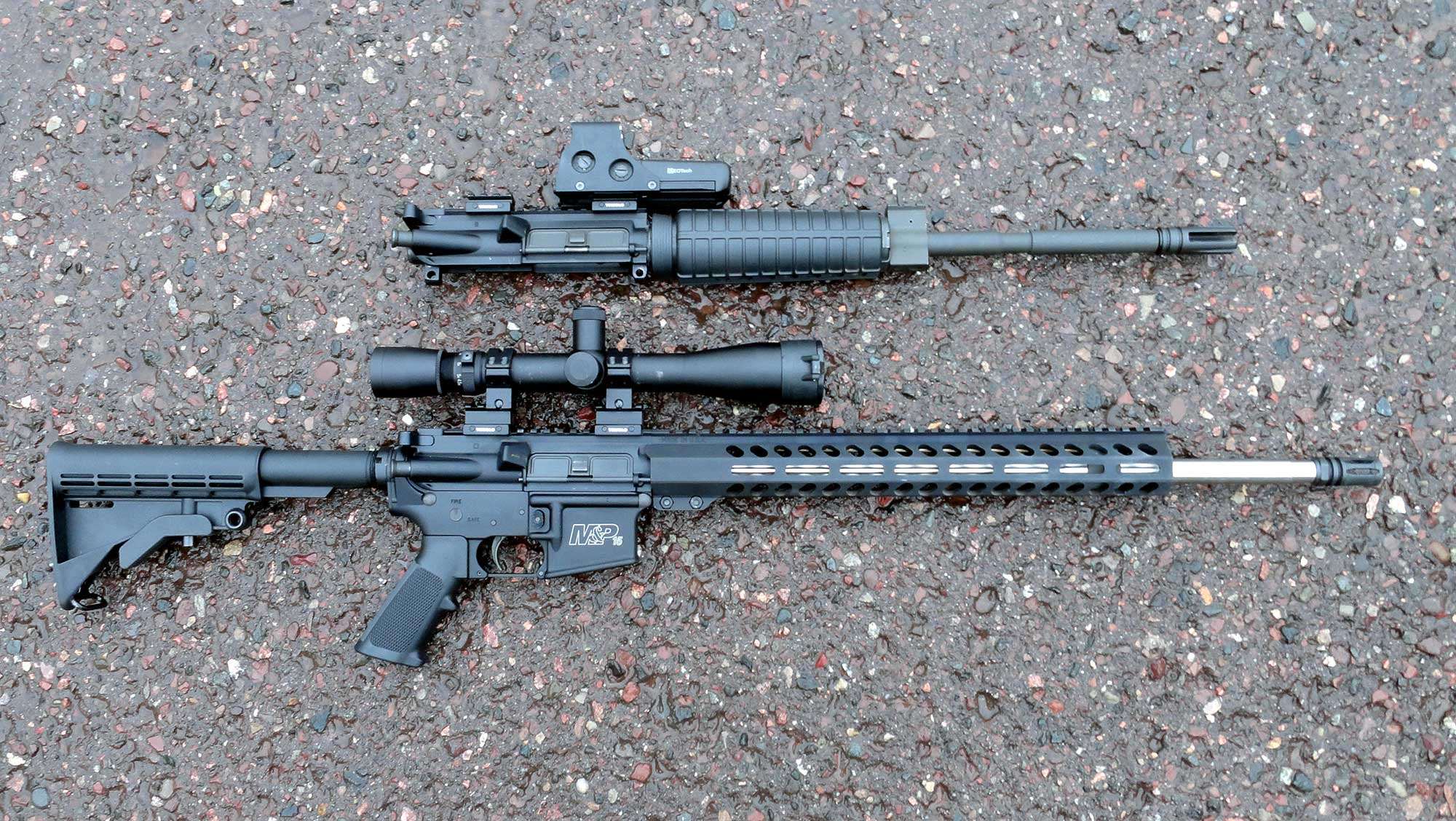
What about semi-automatic rifles? Target-grade semi-automatic rifles abound today, but usually are priced beyond the limits of my experiment. Instead, I looked into the lower-cost alternative of AR uppers offering free-floated, heavy barrels, easily installed by anyone who owns an AR or Modern Sporting Rifle (MSR). Therefore, atop my Smith & Wesson M&P-15 lower receiver, I tested a new Palmetto State Armory (PSA) upper assembly, which includes a bolt carrier group and retails for less than $400. Free-floated and incorporating a medium-weight, 20” stainless barrel, PSA’s Kris Vermillion told me his company doesn’t advertise its uppers as “match grade,” but they typically perform at a match-grade level, which I will put to the test. These PSA barrels are button-rifled from 4140, 4150V or 416R stainless steel.
My PSA upper was chambered in Federal’s new flat-shooting .224 Valkyrie, with a 1:7” twist rate, which should nicely accommodate heavier bullets of 68 to 90 grs.—a major consideration if you intend to shoot long-range.
Choosing a Suitable Long-Range Optic
When shooters ask me to recommend a scope, I ask, “How much can you spend?” My point is, there are scopes at different price points, but you should get the most capability you can afford. A rough rule-of-thumb, I believe, is that your riflescope should approximate the cost of your rifle.
But what kind of scope? Precision shooting requires exacting elevation adjustments, so your point of aim is your bullet’s point of impact. Therefore, imprecise elevation holds—such as lines and mil dots—and the generalized elevation settings on a bullet drop compensator, are simply too imprecise.
Precision requires target knobs—also called target turrets—so your elevation (and at times, windage), can be adjusted with great exactness. A truism I coined long ago, “You cannot shoot more precisely than you can aim,” well expresses such exactness. Most knobs offer incremental “clicks” of 1/4 or 1/8 minute of angle (m.o.a.). I think ¼ m.o.a. offers acceptable exactness with far less “clicking” than the finer increments of 1/8 m.o.a. Knobs are less complicated than they appear, and the Internet has plenty of tutorials and instructions on their use.
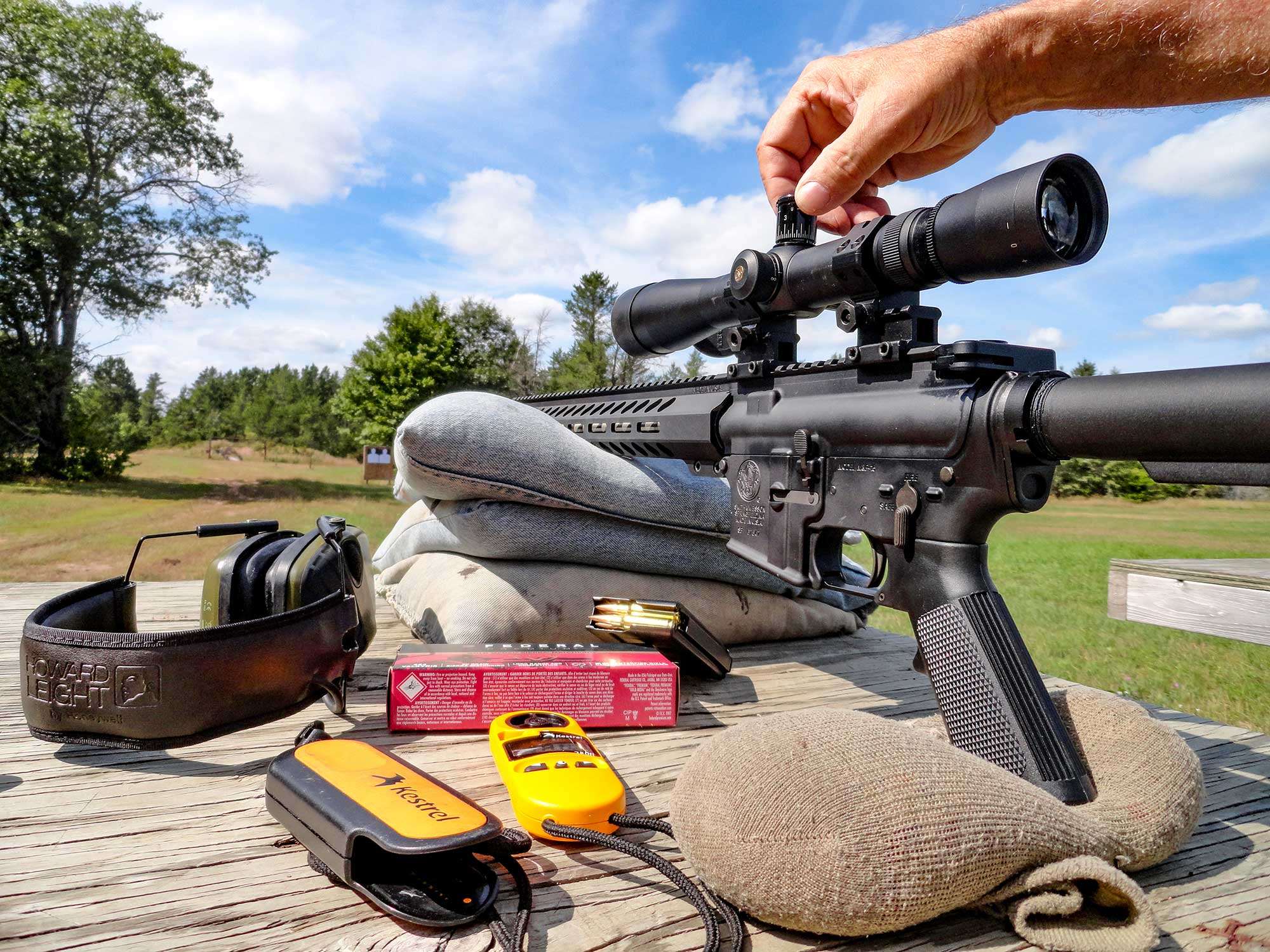
To learn your cartridge’s exterior ballistics and, thus, your target knob settings, many ammunition makers’ and scope manufacturers’ websites offer free data downloads; for instance, the Hornady site contains a sophisticated ballistic calculator, while Burris has software to generate a “dope card” for your target knob settings. You can further refine this data via live-fire testing.
So which scopes will I use in my experiment? Just like my selected rifles, I will economize by employing used optics from Leupold, Burris and Bushnell of at least 10X maximum magnification with target knobs, which can be had for $300 to $500. If you acquire a scope lacking target knobs, some manufacturers will retrofit them at a reasonable cost; I’ve done this several times through Leupold and Burris.
Picking the Right Long-Range Cartridge
Continuing our pursuit of affordability, consider the cost of ammunition. My favorite long-range cartridges—the .300 Win. Mag. and .338 Lapua Mag.—are expensive, especially in match loads. By contrast, more common chamberings—such as .308 Win. and .223 Rem.—offer the lowest-priced match ammunition, with offerings from many manufacturers. Generally, these .223 Rem. and .308 Win. match loads cost $20 to $30 per box, which actually is less expensive than today’s high-end hunting loads.
To further economize, you can pool money with other shooters for bulk purchases, watch for sales or consider commercial reloads. Alone among major ammunition makers, Black Hills Ammunition offers reloaded .223 Rem. cartridges with 68-, 69-, 75- and 77-gr. match bullets. You could also assist an experienced handloader, swapping your labor for his help reloading your ammunition.
Keep in mind that, as a precision shooter, you need not consume a lot of ammunition. Unless I’m zeroing a rifle or preparing for an event, I typically fire just 20 rounds per weekly range session, with each shot planned, recorded and analyzed. Between shots, I dry fire several times and then load only one round so I focus solely on that shot. I jot down detailed data for each shot I fire. If I’m firing a semi-automatic rifle, I still load one round at a time. Shoot less and make each a quality shot. And dry-fire often! That’s the best practice possible short of live-firing, and you can do it almost anywhere.
Which is the most accurate load for your rifle? Even assuming you’re firing match-grade ammunition, different loads can produce different results, mostly due to your rifle’s rate of twist. To fire heavier .223 Rem. bullets, your rifling twist rate should not be 1:9”. Savage, Browning, Ruger and Tikka currently offer .223 bolt-actions with 1:7” or 1:8” twist rates, as do a number of AR manufacturers. No matter the cartridge, once you’ve found your rifle’s most accurate load, shoot only that specific load.
In addition to these cartridges my test includes two ballistically impressive—but moderately priced—cartridges: Hornady’s 6.5 mm Creedmoor and Federal’s new .224 Valkyrie, which stays supersonic to 1,300 yds.
How Accurate Are These Budget Precision Rifles?
My used rifles are unmodified, factory-made, and sell for well under $1,000—several at half that or even less. They are economical, entry-level rifles for a novice precision shooter. The scopes, too, are used, costing $350 to $500 apiece. The ammunition is factory-loaded, match-grade.
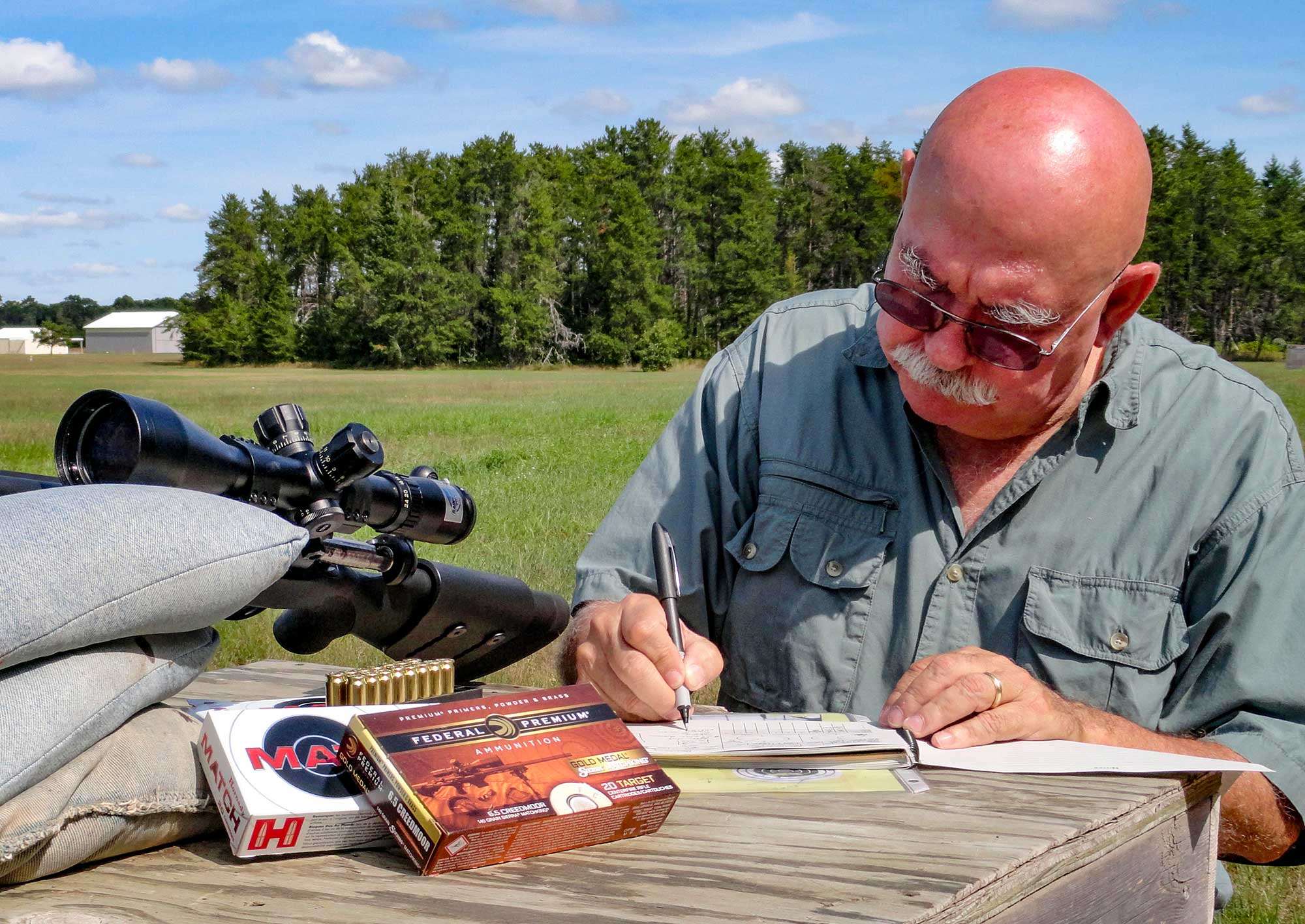
Though we’ll be firing five-round, 100-yd. groups off sand bags, this firing is for demonstration, not a formal American Rifleman evaluation, which requires five, consecutive five-shot groups. What interests us is whether these rifles/scopes/loads can yield 1” groups or better—which most shooters consider the precision shooting threshold. When you can consistently produce groups this tight, you’ll be ready to consider a further investment in rifle and optics.
The first rifle I fired was a used Remington 700 BDL with a 24” heavy varmint barrel, in .308 Win. This rifle is nearly 40 years old and unmodified in any way—except an expert gunsmith reduced its trigger pull to 3 lbs., 8 ozs. The optic is a used Leupold Vari-X-III, 6.5-20X with target knobs. This rifle and scope produced a 0.56”, five-shot group firing Black Hills Gold 168-gr. Match; Black Hills Tipped Match, 168-gr. yielded a 0.60” group; Black Hills 178-gr. ELD-X Match shot 0.65”. Hornady 168-gr. BTHP Match fired a 0.95” group while Federal’s 185-gr., Juggernaut Open Tip Match shot a 0.78” group and Federal’s 168-gr. Match fired 0.69”. Keep in mind, these were five-round groups.
The next bolt gun was a 15-year-old, wood-stocked CZ-USA 527 with a standard-weight barrel and a set trigger (which is factory-standard) in .223 Rem. It was topped by a used Burris Black Diamond 3-15X scope with knobs. Firing Black Hills 52-gr. Match yielded a 0.96”, five-round group, while Black Hills 52-gr. Match reloads shot a 0.78”. Though the CZ 527 is light, handy and accurate, repeated shots can heat up its thin barrel, reducing accuracy.
Our last bolt-action was a recently acquired Savage 11 Long Range Hunter in 6.5 mm Creedmoor, just as it came from the factory. The scope was a used Bushnell Tactical, 6-24X 50 mm with knobs. Weather conditions weren’t ideal the day I fired, but we still yielded sub-m.o.a. five-round groups. Through previous firing, I knew this rifle did not like 120-gr. loads, so I started with Federal 140-gr. Match, which yielded a respectable 0.76” group. Three Hornady loads--140-gr. and 147-gr. ELD Match, and American Hunter 140-gr.—all provided groups slightly under one m.o.a.
Our other flat-shooting round—the .224 Valkyrie—was shot using an affordable Palmetto State Armory upper atop my used S&W M&P 15-lower. The PSA upper incorporates a stainless, free-floated, 20” medium-weight barrel. Because the Valkyrie cartridge base is larger in diameter than that of a .223 Rem., it employs a larger diameter bolt face and a 6.8 mm SPC magazine. (Both the 6.8 mm SPC and the Valkyrie case are derived from the .30 Rem. cartridge.)
Atop the PSA upper I mounted a used Leupold Long Range 3.5-10X with M-1 target knobs, and fired Federal’s 90-gr. match Valkyrie load. As this was a new upper and a newly fielded cartridge, I chose to fire five, five-round groups with impressive results: The groups measured 0.82”, 0.85”, 1.15”, 0.93” and 0.98”. Average group size was 0.95”.
I think these results prove my theory. Despite these bolt-actions being used “factory” rifles—or, in the case of the PSA, a new upper on a used lower receiver—and employing used riflescopes, to fire moderately priced ammunition, you can yield one m.o.a., or better, groups, which is the threshold of precision shooting. Thus, for a modest investment, any shooter can begin a lifetime of precision marksmanship and join the rest of us—firing long-range matches, extending our hunting and shooting distant steel targets.
And who knows? Maybe someday you can even afford that Lamborghini.













